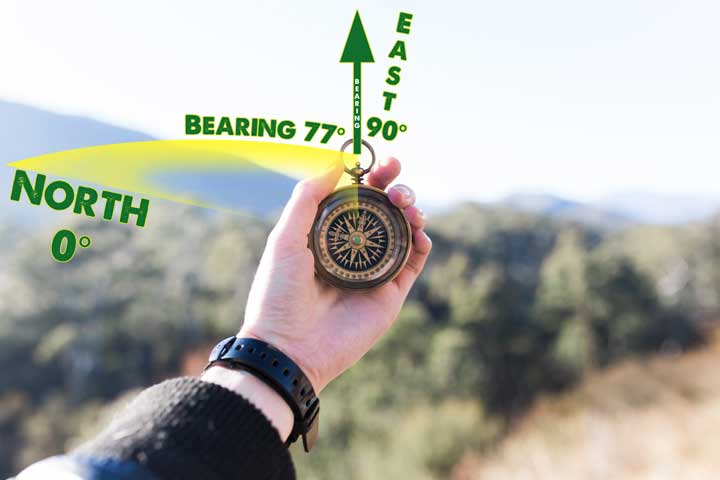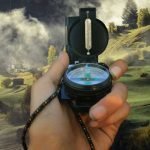Map reading and navigation in general can be tricky subjects to get your head around when you are just getting started learning about the subject. In order to cross over from the theory to the practical part of navigation you will need to be familiar with all of the compass lingo that comes with the subject.
To help you get familiar with the terminology involved with compass reading, we have prepared a complete guide of compass lingo and terminology that will help you get acquainted with the terms you need to become an expert at navigation.
Navigation Terminology
- Absolute bearing: a term used in nautical navigation to indicate the angle that is between magnetic north and an object.
- Azimuth: normally measured in degrees, is the angle between north and a line from the observer to a point of interest.
- Baseplate: the clear plate that lies under a baseplate compass. It contains a ruler and other indications to help navigate.
- Bearing: the horizontal angle between the direction of an object and an object or between an object and true north.

- Cardinal points: the compass bearings of north, east, south and west.
- Compass dip: also known as magnetic dip, it is the angle made by the magnetic needle of a compass that is held vertically.
- Compass rose: a circle that shows the main cardinal points printed on a map or chart.
- Declination: the angle of deviation from true north in a compass.
- Geodetic north: another term for true north.
- Grid north: varying slightly from magnetic north, it refers to the direction pointing north on the grid lines of a map projection.
- Heading: the direction in which a vessel or vehicle is pointed.
- Intercardinal points: the compass bearings northeast, southeast, northwest and southwest.
- Magnetic north: although it is near the north pole, it is a point on the surface of the earth’s northern hemisphere in which the earth’s magnetic field points downwards.
- Magnetic variation: also known as magnetic declination, is the angle between magnetic north and true north.
- Meridian: a circle on the surface of the earth that passes through the poles.
- Relative bearing: used for nautical navigation, is the angle between a craft’s forward direction and the location of another object.
- Taking a bearing: to ascertain the position of a person or an object in relation to the direction of where one is going.
- Triangulation: to trace and measure a series of triangles to determine the relative positions and distances in a territory.
- True north: also known as geodetic north or true north pole, it is the geographic direction towards the north pole.
Learning these terms will help you understand how to work with your compass a lot better and will give you the knowledge you need to understand both the elements that you can find in your compass and the jargon you need to navigate.



